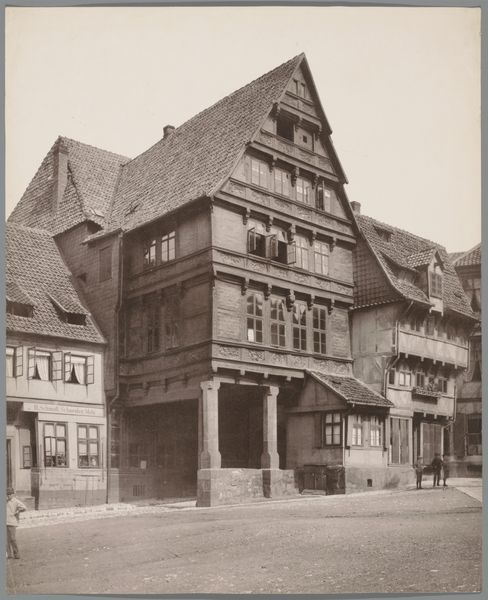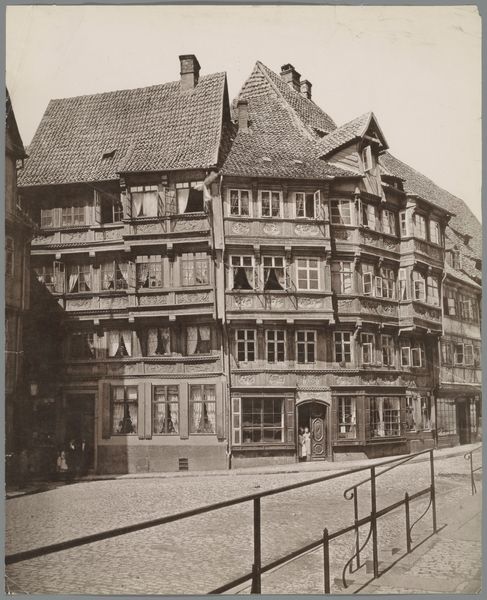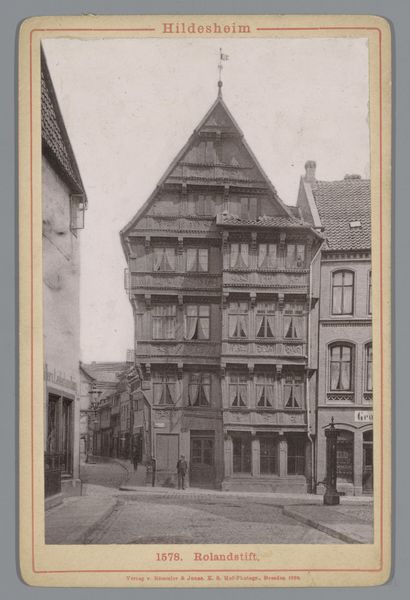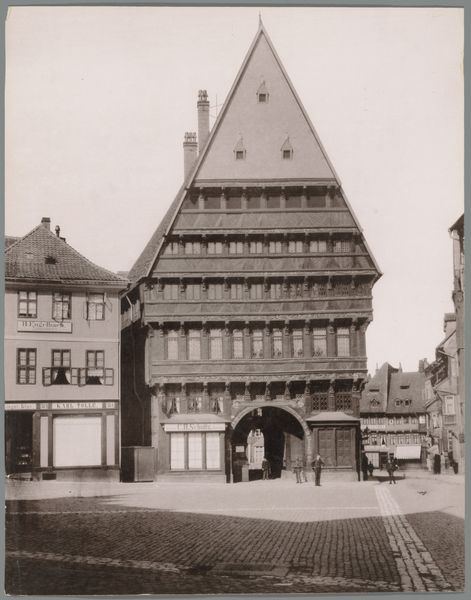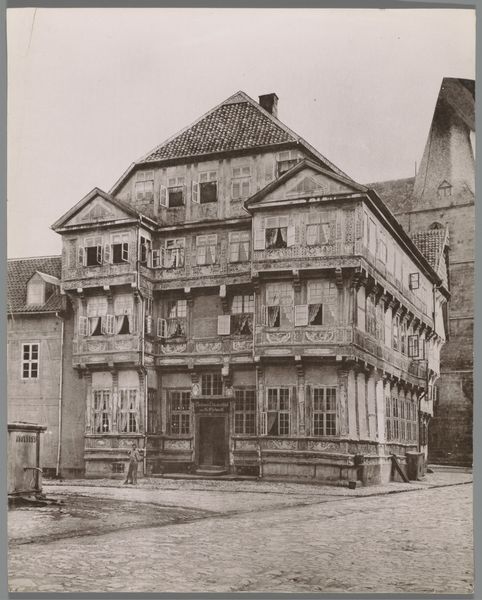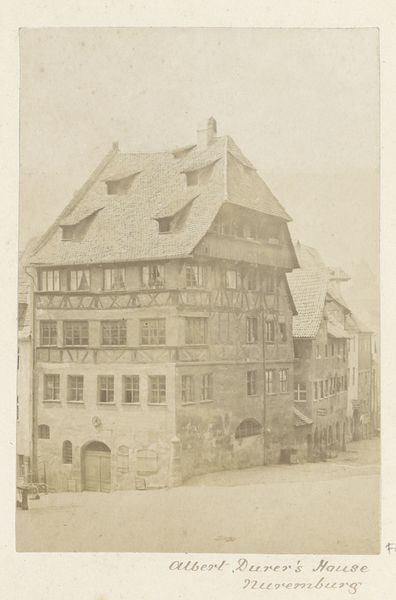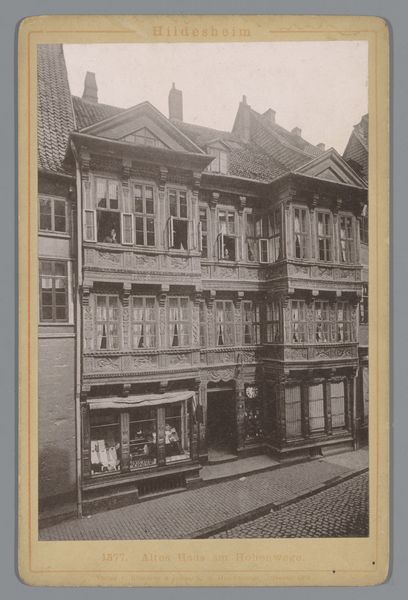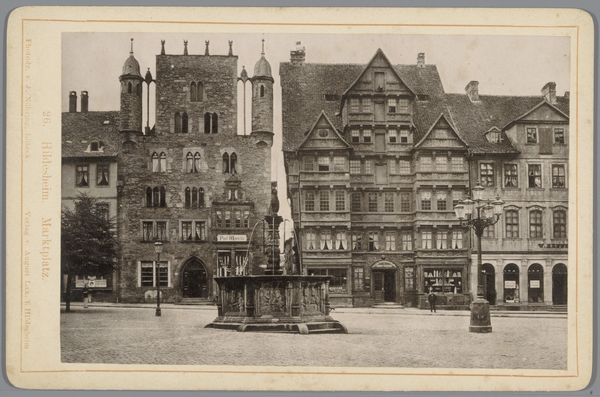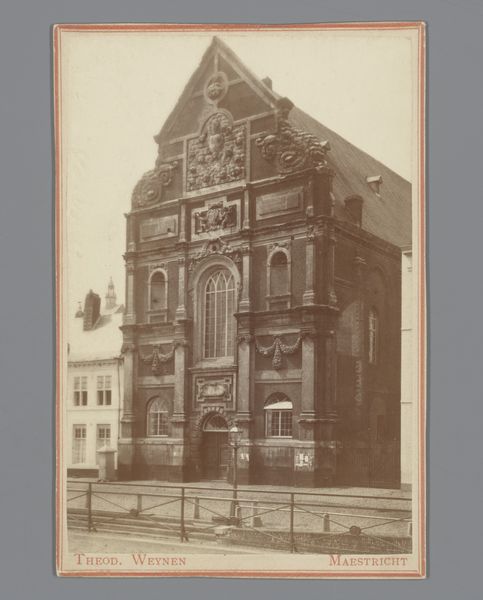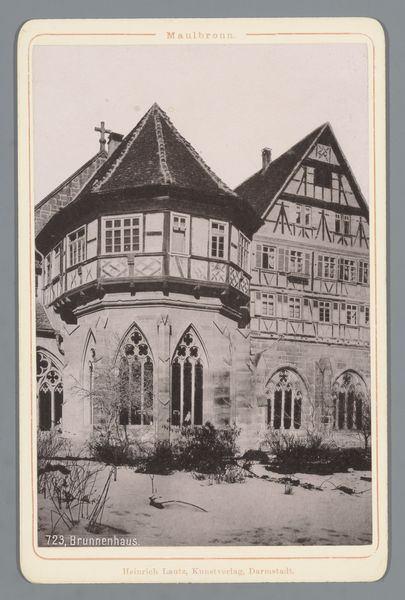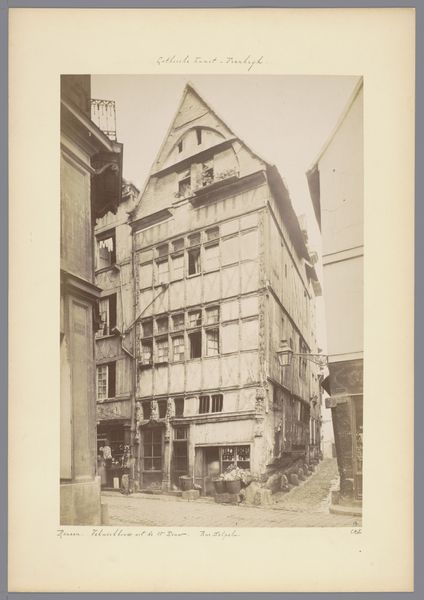
print, photography, gelatin-silver-print, architecture
# print
#
photography
#
gelatin-silver-print
#
cityscape
#
architecture
Dimensions: height 166 mm, width 108 mm
Copyright: Rijks Museum: Open Domain
Curator: This gelatin-silver print, titled "Huis aan het Andreasplatz in Hildesheim", was captured around 1890 by the studio of Römmler & Jonas. Editor: Wow, it looks like a stage set! Stark and angular, all dark timbers and towering roof, like it’s about to tell a Grimm fairy tale. I get this uneasy, storybook vibe right off the bat. Curator: Observe how the photographers have employed a central perspective, positioning the building frontally to emphasize its architectural features. The timber framing and the steep roofline are clearly articulated, which reflects a prevalent interest in preserving and documenting historical architecture during that period. Editor: The way the light hits the different levels… it's almost like a layered cake of shadows. And the figures down below are like tiny afterthoughts, swallowed by the scale of the building. I’d wager a flock of ravens would have looked equally natural. Curator: The gelatin-silver process would have enabled them to produce prints with a high degree of detail and tonal range, allowing for the subtle textures of the wood and stone to be captured, further contributing to the image's overall clarity. It is a study in light and form. Editor: I wonder what secrets that house holds, eh? There's such a weighty silence radiating from the photograph. A stillness. It reminds me of that old saying – every stone has a story. You know, a home from home. It must have seen all of Hildesheim go by in all its seasons. Curator: Indeed. Beyond its technical qualities, the photograph is a historical artifact, providing insight into the urban environment and architectural aesthetics of the late 19th century. A document reflecting particular social concerns about urban identity and preservation. Editor: Looking at it now, the image manages to straddle both an invitation and a warning, which probably means I wouldn’t be too keen on calling to ask about residing in it. And all the more tragic because I'd wager its cellar will hold a fine selection of Rieslings. Curator: Well, looking at the formal arrangement, the print presents a stark clarity that seems typical of much commercial architectural photography from the late 19th century. A blending of technique, context and narrative I find continually compelling. Editor: Yes, it’s made me think about how much buildings are characters too—silent witnesses to our little dramas. Each stone a verse. And this house, specifically, probably remembers details most of the town forgot long ago.
Comments
No comments
Be the first to comment and join the conversation on the ultimate creative platform.
